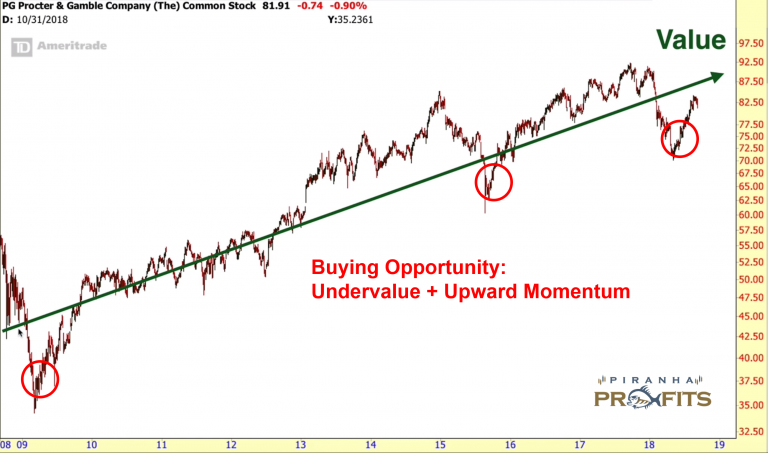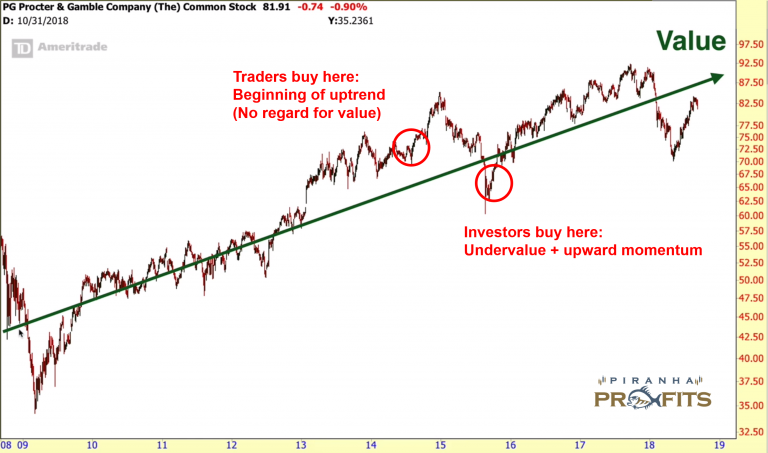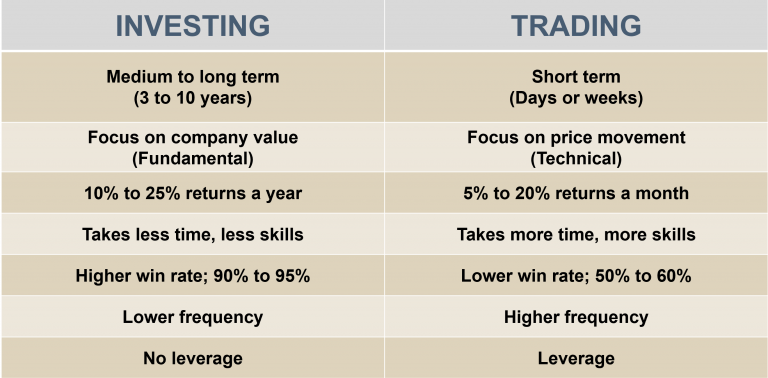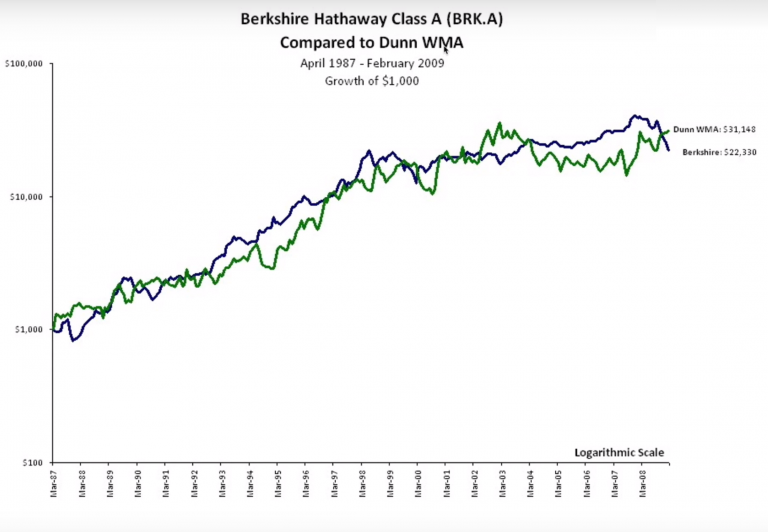If you are interested in the stock markets, you would’ve heard of the terms “investing” and “trading” and people asking whether to go for investing or trading. In this article, I talk about the difference between stock investing and stock trading, two very different games that can build your wealth, but with very different sets of rules. More importantly, we’ll look at the common questions, “Which one is more profitable?” and “Which one should I focus on?”
What Is Stock Investing?
In stock investing, we focus on the value of the business behind the stock. Remember, when you're buying a stock, you're buying part ownership of a business. What drives the value of a business? Well, simply sales, net profit, and cash flow.
As investors, we want to identify good businesses by reading their financial statements. What these good businesses have is a sustainable competitive advantage that allows the company to increase its sales, profit and net income consistently over time.
When you identify a good business, you are confident that over time the company will increase in value. By buying and holding this company’s shares, you believe that the price will eventually become higher and bring you profits.
But here's the thing: In the short term, does the share price always reflect the true value of the company? No, it doesn't.
Because in the short term the stock market can be irrational; in other words, highly emotional. Share prices are driven by demand and supply that are driven by emotions like fear and greed. These, in turn, are driven by events like tariffs and trade wars. So in the short term, stock prices move up, down, sideways, up, down, etc… in the short term.
How to Make Money on Stock Investing
Identify Good Businesses
In investing, the first key to winning the game is identifying good businesses with a sustainable competitive advantage. These are companies that you know will increase in value in the long term, like Alphabet, Amazon, Procter & Gamble, Unilever, etc.
Buy When the Stock Is Undervalued
The second thing is being able to calculate the intrinsic value of the company at any point in time. For example, if we know the intrinsic value of Company X is $50 per share, we buy when the share price is selling below the intrinsic value, say, $40 per share. When this happens, we say the stock is undervalued. Conversely, when the price is above the intrinsic value, it is overvalued.
As investors, we want to buy during short-term market corrections. When there's some kind of crisis and the price goes below the intrinsic value, we buy when it's undervalued. Now that's what we call “value investing”.
Buy When the Stock Has Upward Momentum
But the trouble with value investing is this: Sometimes when you buy cheap, cheap can get cheaper. I believe the best way is to use Value Momentum Investing™, which means we don't just buy when the price is below intrinsic value — we buy when there's also upward momentum. Price is undervalued and is starting to move up — that’s the best time to accumulate the stock.
Invest with a 90% Win Rate
Now, when you hold a good stock over time and allow it to compound your wealth, what's the win rate? In investing, the win rate should be 90% to 95%. In fact, my personal win rate in investing is close to 100%. Because once I find a good business I know for certain it will always go up over time.
Of course, a good business can possibly become a lousy business, so you have to know when to exit an investment once the value starts to go downhill (when the company loses its competitive advantage).
In investing, we don’t put stop-losses, because when you're buying a good business, you’re confident that it will increase in price over time. So even if the price drops in the short run, you can average down by buying more as it goes lower.
Stock Investing Example: Procter & Gamble
Let me give you an example of a good business that rises in value over time. Procter & Gamble (P&G) is one of the biggest brands in consumer household items. You can see that over the long run, P&G increases in intrinsic value (green line). But in the short term, the price does not follow the true value. Sometimes the price crashes all the way down during the financial crisis, then it shoots up.
Whenever the price is below the intrinsic value, value investors see these as great buying opportunities. But again, the problem with this is that low can get lower, cheap can get cheaper while the stock is on a downtrend.
That’s why I use the strategy Value Momentum Investing™, which means I buy only when the stock is undervalued AND showing upward price momentum. In other words, I only enter when I see that the downtrend has reversed into an uptrend, with higher highs and higher lows.

What Is Stock Trading?
Stock trading is a very different game from investing. When we trade stocks in the short term, we don't care at all about valuation (i.e. the company’s true value). We don't care if it’s a good business or what it does. We only care about the short-term price movement driven by human emotions in the market. In other words, we look at price trends — whether the price is going up, down or sideways.
In trading, we're getting in and out really fast — within a couple of days or even within minutes. When we see an uptrend, we can buy low and sell high to make a profit. If the price is going down, we can do a short-sell, i.e. sell high and buy back low.
As a result, in trading, the average win rate is about 45% to 60%. We’re only right about half the time, so we always place a stop-loss to protect our capital. We plan our risk-reward so that when we lose, we only lose 1% of our capital. But when we win, we win 2%. This ensures that we make good profits even if we’re wrong half the time.
Stock Trading Example: Procter & Gamble
Let’s go back to the P&G chart. You can see that in the short term, the stock price moves in trends — down, up, up, up, down. Since traders only focus on price action, they would buy when the price has just reversed into an uptrend, and quickly sell before it goes back into a downtrend. Even if the price is above the intrinsic value, traders don’t care as they’re just making a quick profit and don’t intend to hold the stock for long.

Investing and Trading: What’s the Difference?
Now, you may be thinking, “Which one should I start with or focus on?” Well, I think it boils down to personal preference. Look at the table below and see which method suits your personality and lifestyle better.

- Are you someone who prefers to analyze company financial statements? Then go for investing. Do you prefer to look for patterns in price charts? Then go for trading.
- Are you someone who has the patience to hold a stock for the long term, say up to 10 years? If yes, investing is the way. Or are you someone who enjoys fast-paced action, taking profit within days or even minutes? Then trading is your game.
- Do you have a day job and only want to spend 2 to 3 hours a week to make that extra income? Then go investing. But if you’re willing to put in more time and effort every day to look at the charts, then trading may be better.
As for me, I started more than 20 years ago on stock investing. Now I've got both an investment portfolio and a trading portfolio. I have them for different reasons and manage them very differently.
My trading portfolio is where I get in and out of the market really fast, trading both the stock market and Forex market. I trade for quick cash flow — once I put money in, I don’t top up any more money, I only take money out when I’ve made winnings. Once I generate cash flow, I put this money into my investment portfolio where I buy and hold great businesses that will compound and increase in value.
So you see, investing and trading stock are different games to help you build your wealth — it doesn’t have to be an “either or”! But if you’re just starting out, it’s good to start with one first and become really good at it. Then if you feel you have the appetite for more, go for the other one.
No matter which one you start with, the key is to stick to the rules of your game. What you NEVER want to do is to mix your rules together. Some people say, "Okay, I'm going into Facebook for a short-term trade." But once they get in and it drops, they say, "I'm not going to cut my loss, it's now becoming an investment."
👍 Never let a trade become an investment, never let an investment become a trade.
The Relationship Analogy
Here’s a cheeky analogy to help you remember the difference. Long-term investing is like a stable marriage. When you get married, you don't need to use any protection, right?
When you get married, you are loyal to the person. So even if that person throws tantrums and goes through mood swings in the short term, you stay with that person because you know the person has character strengths you love. Over time the relationship will flourish. Makes sense?
But in short-term trading stock, it's like going for an exciting one-night stand. In a fling, you don't care about the person's values, you're just going in (when the price goes up) and getting out (when the price goes down). You've got to use protection due to the risks involved, there’s no loyalty and you're in and out really fast.
A Tale of Two Moneymakers: Buffett and Dunn
A lot of people ask: How does stock investing compare to stock trading in terms of performance? Which one is better? To answer that question, let's take a look at two moneymakers with very different styles.
The first person is Warren Buffett and his company is Berkshire Hathaway. Buffett is a total investor. He doesn’t look at stock charts; he just looks at the fundamentals of the company, buys when it's undervalued and holds the company for the long run.
Now, contrast that with another person named Bill Dunn. Dunn is a trader. He goes long on uptrends, he goes short on downtrends and he runs a fund known as Dunn WMA.

Let’s look at the last 22 years and how they've performed compared to each other. If you had invested $1,000 in Buffett's company (blue line), with his investment style your money would have grown to $22,000. On the other hand, if you had invested with Bill Dunn (green line) and he trades the money purely using price action, the money would have grown to $31,000.
In this example, over the time period (1987 – 2009) you can see that Bill Dunn outperformed Warren Buffett — the trader beat the investor. But if you look at the years 1993 – 1996, you can see that Buffett (blue) clearly beat Dunn (green).
Investing or Trading Stock: Which Is Better?
There are some people who purely focus on investing. Warren Buffett is a pure investor; he doesn't trade the markets. Then there are people like Jesse Livermore who used to be fully a trader. He doesn't invest, he just trades the markets.
So the point is, between investing and trading stock there’s no “better” one! There are times when trading outperforms investing and there are times when investing outperforms trading. But in the long run, they do equally well. Investing and trading are just two different methods that help you achieve the same goal of building your wealth in the markets.
So whether you’re starting out with one first, or you are balancing between the two like me, just remember:
Focus on the rules, never mix them up and you will prosper no matter what you do in the markets.
Want to learn the exact investing strategy I used to become a stock market millionaire? Learn about my Whale Investor™ stock investing course and Profit Snapper™ stock trading course.

.png)
.png)
.jpg)


submit your comment